1. Denmark winds up wind
In January of 2014, Denmark got just over 61% of its power from wind. For the whole of 2014 it was 39.1%, a world record.
Their leadership is working well for them. Nine out of ten offshore turbines installed globally are made in Denmark. They plan to be fossil fuel free by 2050.
Elsewhere Germany and the UK smash records for wind power generation. Scotland hopes to be fossil fuel free by 2050.
On Boxing day rooftop solar met one third of South Australia’s demand and at least 30% from 11.30am to 3.30pm. Bonaire (pop. 14,500), a small island off the coast of Venezuela, said goodbye diesel and hello 100% renewable electricity.
California Gov. Jerry Brown last week called for
the state’s electric utilities to boost their renewable energy procurements to 50% of retail electric sales and discussed future initiatives to support rooftop solar, battery storage, grid infrastructure and electric vehicles.
As Bill Lawry would say, “It’s all happening!”
2. 2014 the hottest year
The first set of figures is in, this time from the Japan Meteorological Agency, showing 2014 as the hottest year so far:
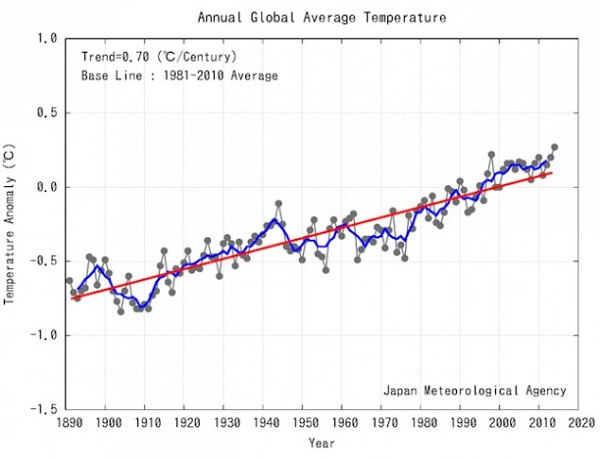
The red line is the long-term linear trend.
The blue line is the 5-year running mean.
Australia had the third hottest year on record.
3. Chinese three-wheeler is for real!
From John D’s Gizmag collection we have the Spira4u three-wheeler car:
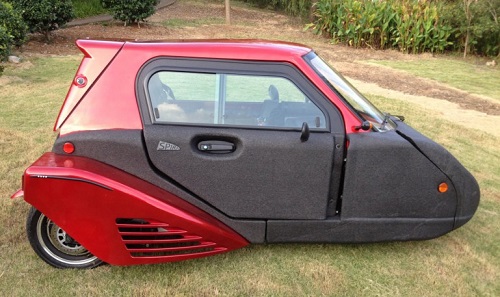
It’s not a toy, it’s a serious car which has gone into pilot production as a 10 kW electric or a fuel-injected 150 cc version with an economy of 2.94 l/100km (80 mpg).
It has a handy parking option:
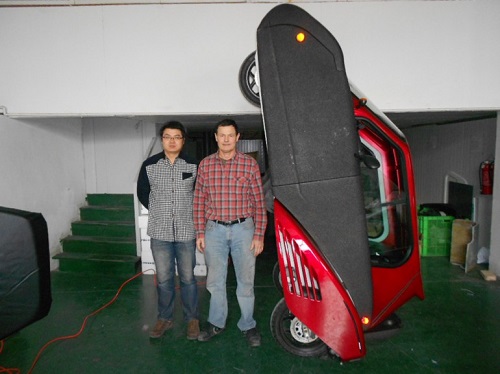
And it floats:
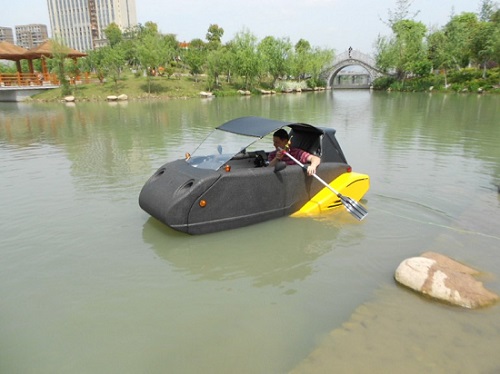
An amphibious version is under development.
4. California starts to build a high-speed rail system
The first phase of California’s high-speed rail system will be a 29-mile stretch from Fresno slightly north to the town of Madera. From there the project will link up with urban centers like Los Angeles and San Francisco, eventually allowing commuters to travel between those two cities at 220 mph and cutting the trip from nearly six hours to less than three. The system will eventually extend to Sacramento and San Diego, totaling 800 miles with up to 24 stations.
The full rail system should be in use by 2028.
5. Solar at grid parity in most of world by 2017
At RenewEconomy:
Investment bank Deutsche Bank is predicting that solar systems will be at grid parity in up to 80 per cent of the global market within 2 years, and says the collapse in the oil price will do little to slow down the solar juggernaut.
Quiggin at The Conversation and his place: Only a mug punter would bet on carbon storage over renewables.
6. When you are in a hole, stop digging!
From a study in the journal Nature:
“Our results suggest that, globally, a third of oil reserves, half of gas reserves, and over 80 percent of current coal reserves should remain unused from 2010 to 2050 in order to meet the target of 2°C,” write authors Christophe McGlade and Paul Ekins of University College London.
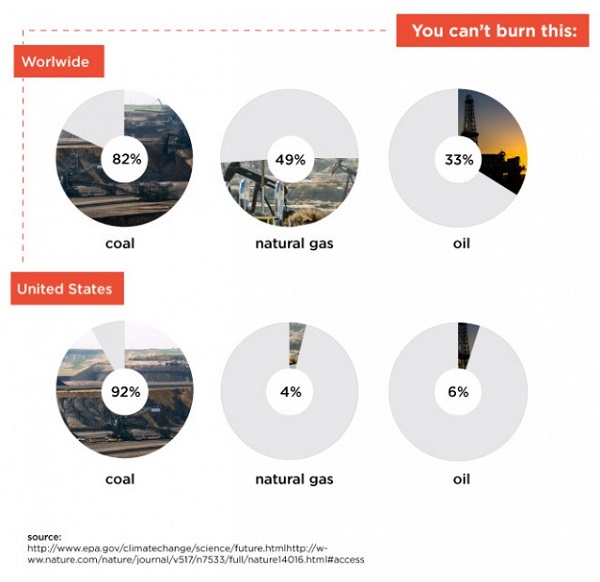
Keeping the increase in global temperatures under 2°C will require vast amounts of fossil fuels to be kept in the ground, including 92 percent of U.S. coal, most of Canada’s tar sands, and all of the Arctic’s oil and gas…
In 2013, fossil fuel companies spent some $670bn on exploring for new oil and gas resources. The figure should be zero.
7. Climate change will create more environmental refugees
Natural disasters like Typhoon Haiyan—which devastated the Philippines in 2013 displace more people than war, according to the Internal Displacement Monitoring Center in Geneva. And as climate change sets off increasingly lethal natural disasters, so will the numbers of environmental refugees increase, Reuters reported.
It is a reality that governments must prepare themselves for. In 2013, some 22 million people were displaced by extreme natural disasters like typhoons, earthquakes and tsunamis, a number three times the number of those who were forced to migrate because of war, according to the IDMC.
Earlier this summer New Zealand accepted a family who cited climate change as the reason why they had to flee their homeland, thought to be the world’s first official environmental refugees.








